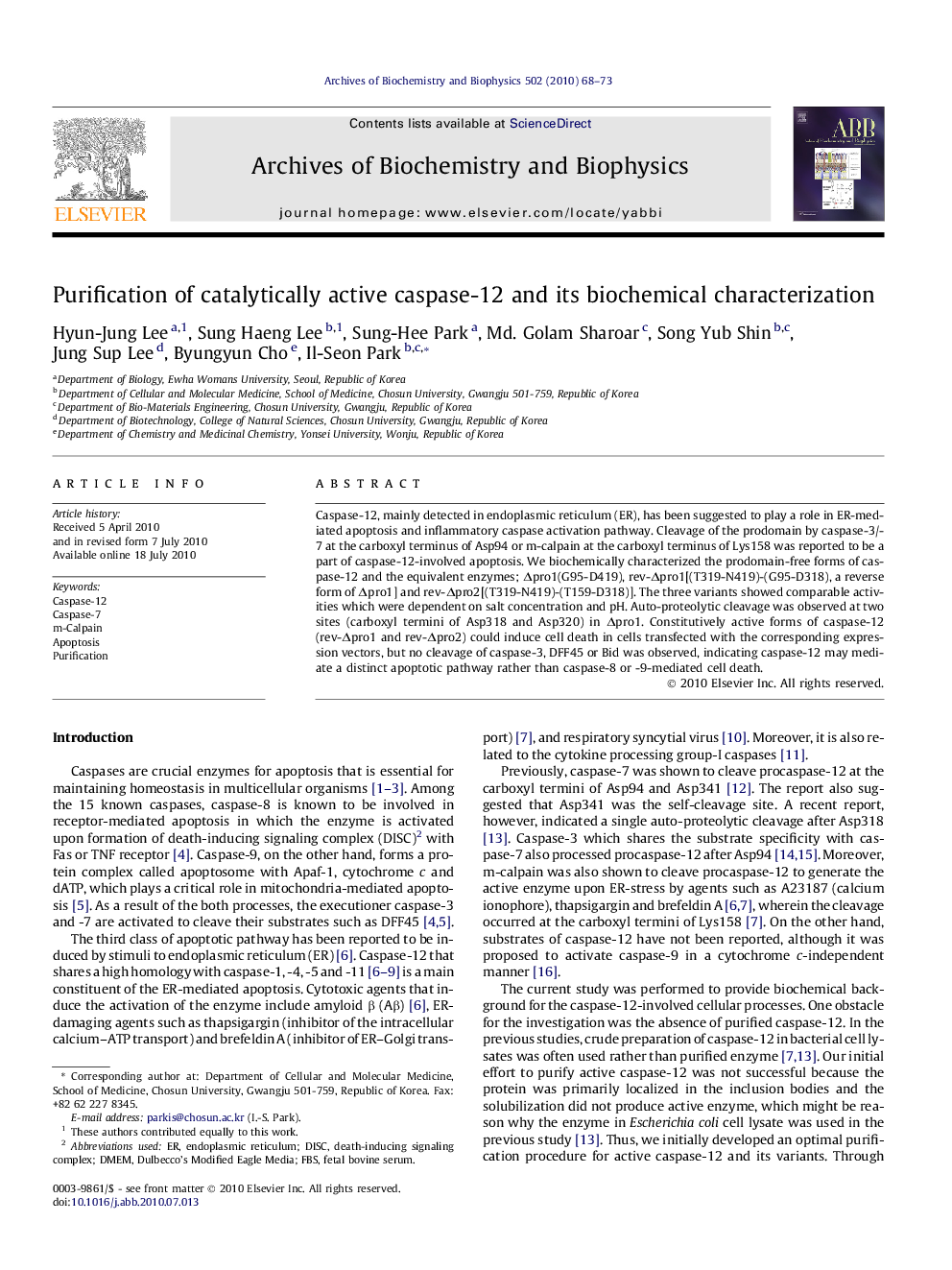| Article ID | Journal | Published Year | Pages | File Type |
|---|---|---|---|---|
| 1925960 | Archives of Biochemistry and Biophysics | 2010 | 6 Pages |
Caspase-12, mainly detected in endoplasmic reticulum (ER), has been suggested to play a role in ER-mediated apoptosis and inflammatory caspase activation pathway. Cleavage of the prodomain by caspase-3/-7 at the carboxyl terminus of Asp94 or m-calpain at the carboxyl terminus of Lys158 was reported to be a part of caspase-12-involved apoptosis. We biochemically characterized the prodomain-free forms of caspase-12 and the equivalent enzymes; Δpro1(G95-D419), rev-Δpro1[(T319-N419)-(G95-D318), a reverse form of Δpro1] and rev-Δpro2[(T319-N419)-(T159-D318)]. The three variants showed comparable activities which were dependent on salt concentration and pH. Auto-proteolytic cleavage was observed at two sites (carboxyl termini of Asp318 and Asp320) in Δpro1. Constitutively active forms of caspase-12 (rev-Δpro1 and rev-Δpro2) could induce cell death in cells transfected with the corresponding expression vectors, but no cleavage of caspase-3, DFF45 or Bid was observed, indicating caspase-12 may mediate a distinct apoptotic pathway rather than caspase-8 or -9-mediated cell death.
Research highlights► We constructed several caspase-12 recombinant proteins that are enzymatically active. Among them, pro1 is mimicking the enzyme after cleavage by caspase-3 or -7, while rev-pro2 is a reverse form equivalent to the protein after cleavage by m-calpain. ► Asp320 was newly mapped as an autocatalytic cleavage site. ► It was found that the autoproteolytic cleavage at the linker site was essential for its full activation, proposing importance of the autoprocessing rather than cleavage of prodomain by caspases or m-calpain. ► Activity of the caspase in vitro was shown to be inhibited under physiological pH and salt concentration, suggesting ion efflux and pH drop may be necessary before its full activation in cells. ► We observed only constitutively active form (reverse forms) could induce apoptosis in cells transfected with corresponding expression vectors. However, activation of other caspases and cleavage of well known apoptosis-related proteins were not detected. Based on the observation, we suggest that caspase-12 may function in a distinct way rather than participate in the well-known signal pathway such as receptor- or mitochondria-mediated apoptosis.
